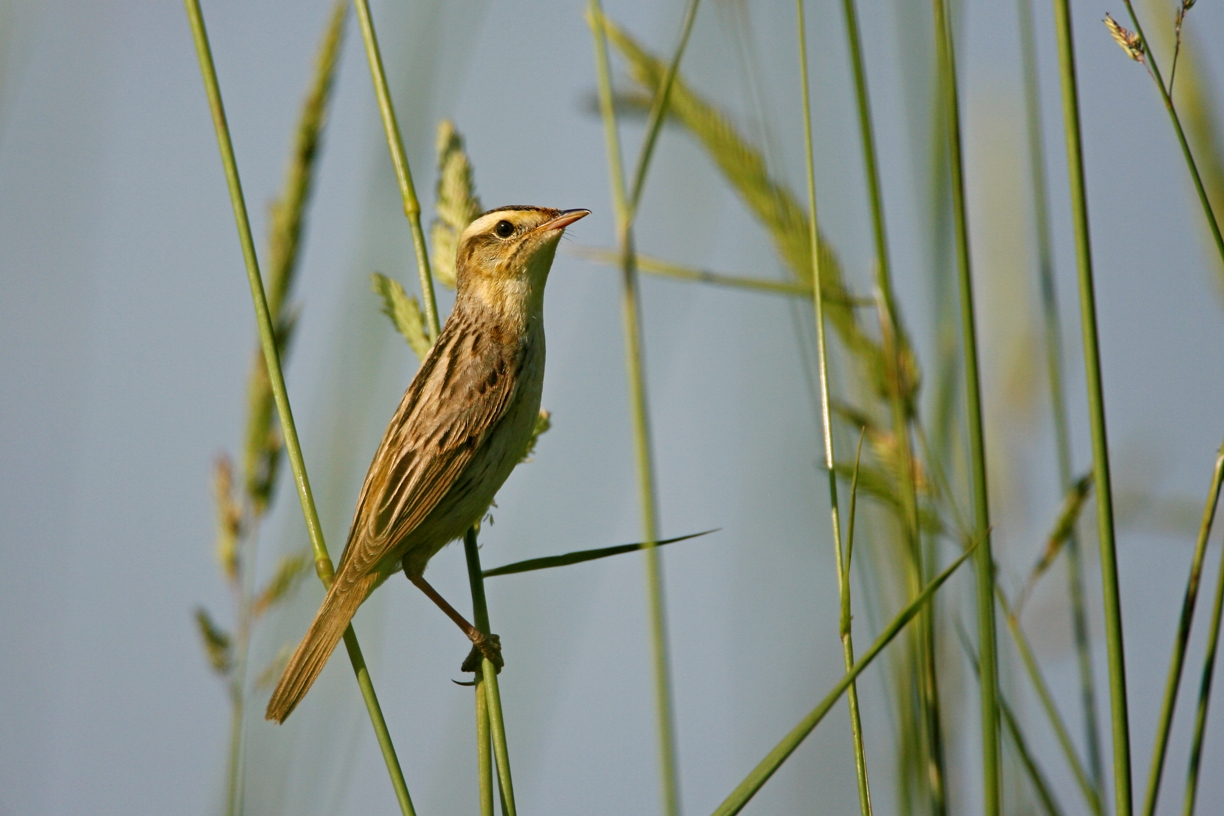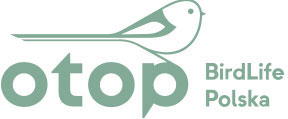Project description
Since September 2010, OTOP holds a new project to protect Aquatic Warbler – it is a co-financed by EU LIFE + Project “Facilitating Aquatic Warbler (Acrocephalus paludicola) habitat management through sustainable systems of biomass use”, shorter called “Aquatic Warbler and Biomass”.
Aquatic Warbler is the only globally threatened species of singing bird, which over 25% of the world population breeds in Poland. The distribution of this species covers only several countries, while in the early twentieth century this species was still common and numerous. In July 2004, under the auspices of Bonn Convention, Polish Government signed an Aquatic Warbler Memorandum of Understanding, which commits signatory countries to pay particular attention to the protection of this species.
 Fot. Samiec wodniczki. Mateusz Matysiak www.mateuszmatysiak.pl
Fot. Samiec wodniczki. Mateusz Matysiak www.mateuszmatysiak.pl
Therefore, since the inception of OTOP, the society deals with the protection of this species. 2005, it won the funding for a EU LIFE Project “Conserving Aquatic Warbler in Poland and Germany”. In this project OTOP led the monitoring of sites occupied by the Aquatic Warbler and inventory of its polish population. More knowledge on threats and habitat requirements of this species was gained. New ways to manage the vegetation within Aquatic Warbler habitats were tested and their impact on the bird’s population measured. Read more about this project here.
During the project it was noted that for the protection of Aquatic Warbler habitat the most important is to use the conservation methods regularly. Works only during the projects are not sufficient. Therefore, OTOP intends within the EU LIFE+ Project Aquatic Warbler and Biomass to introduce a sustainable development of biomass use systems, which will provide funding for conservation measurements on Aquatic Warbler sites, due to usage of the cut biomass. Thus, even after the project finishes, its partners will be willing to use the measures needed by Aquatic Warbler.
The project started in September 2010 and will be run until the end of August 2014. Its budget counts about 3 850 000 Euro.
The aim of the project is to merge recently arising business that uses biomass as an alternative and climate neutral fuel with the management of habitat for Aquatic Warbler.
The project aims to show local businessmen that focusing on the protection of Aquatic Warbler habitat may be economically viable.
The main objectives of the project are:
- Establishing, improvement and testing of innovative systems for the use of biomass from Aquatic Warbler habitat.
- Increase and improve the quality of habitat area suitable for Aquatic Warbler in eastern Poland by carrying out the removal of shrubs and the first mowing on selected sites.
- Ensuring continuity of the management in most of the area of project’s sites, with additional support for agro-environmental programme.
- Establishing plans aimed at protection and business-focused protection of the species to achieve maximum benefit in those two aspects.
- Raising awareness among people managing the environment conservation and businessmen and local societies. Producing promotional materials.
The project will reach the objectives through the following actions:
Setting up the new biomass facility to process the biomass mown at the Aquatic Warbler habitats. Pelleting facility is located in Trzcianne, in the vicinity of the project locations, so that the transport of the biomass will be feasible. Establishing the biomass using facilities to ensure continuation of habitat conservation measures after the end of the project. Produced in those facilities products will be promoted as environmentally friendly.
Ratrak is a machine with which it is possible to remove the shrubs easily and safely – fot. L. Lachmann
- Restoring and improving the habitat of the Aquatic Warbler in areas where it is degraded. In selected areas carrying out bush removal. This measure is not feasible at the moment for the companies, but after carrying it out they will gain additional areas for biomass harvesting. In other areas project will also pay for first time mowing. Thanks to this, land where previously mowing was not feasible, will become attractive and easy place to collect the biomass.
- Development of management plans to ensure the protection of the Aquatic Warbler, for those areas, which don’t have plans yet. Creating such plans will allow controlling protection measures so that they are most suitable for the species.
- Monitoring of both the Aquatic Warbler population and the impact of activities taken under the project on the species population and its habitat. Properties of harvested biomass and feasibility of this way of use will be studied.
Results
During realization of the project, we achieved fallowing results:
- Running biomass processing facility (pelleting installation in Trzcianne), able to process the whole biomass collected from areas under the recurring management actions for Aquatic Warbler in Biebrza Valley.
- Effective promotion of biomass products as ecological, environmental friendly and neutral for climate fuel
- Restoration ca. 900 ha of Aquatic Warbler habitat by bush removal and ca. 500 ha by first mowing. Enlargement of potential Aquatic Warbler habitat.
- Prepared drafts of recomendations to conservation plans for 4 locations: Ciesacin Peatbog (nie jestem pewien czy wcześniej też tak było tłumaczone, możesz to sprawdzić), Bubnów Marsh, Middle Valley of Bug River and Marshy Valley Of The Narew River.
- Published project leaflet and leaflets of 5 locations of project. Produced Aquatic Warbler pins, ecological reusable bags, T-shirts, cups, fridge magnets, roll-ups, two different kinds of posters. Prepared 3 consecutive issues of projects newsletter (Polish and English version).
- Successively updated projects web site.
- Produced and set up information boards (9 in Biebrza Valley, 8 in Lublin region and 1 in Narew Valley). Additionally, 5 “welcome-boards” were set up near access roads to Trzcianne municipality.
- Annually organized projects info-stands during local events in Biebrza Valley region, in frame of which educational classes for children were conducted. 16 presentations concerning Aquatic Warbler were carried out in local schools. In total 317 students took part in classes. Promotion of the project during the LIFE Open Day, organized by The National Fund of Environmental Protection and Water Management.
- Participation in elaborating new Agri-Environmental Scheme for years 2014-2020. Discussion concerning new shape of the scheme was started by OTOPs workshops in Osieck. Published booklet “How to preserve meadows full of birds?” – review of experiences of AES impact on different birds species (including Aquatic Warbler).
- Regular monitoring of Aquatic Warbler and its habitats. Conducted surveys concerning impact of active conservation actions on AW. Carried out research of biomass quality and efficiency of biomass processing facility. Prepared reports of AW monitoring and distribution (report 2011 – full counts at projects priority areas, 2012 report – nationwide census) and report of AW nest productivity research (2011 report – Biebrza Marshes, 2012 report – Biebrza Marshes and Chelm Calcareous Marshes).


